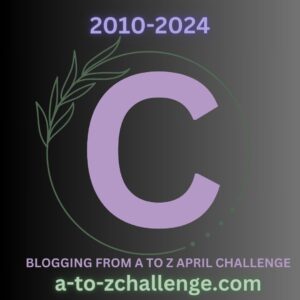Yesterday, I put up a list of all the posts from the 2021 A-Z Blog Challenge, for those interested in what came before.
For those who want something a little simpler and quicker, here’s a summary.
What I Think
First, where I’m coming from, to explain why I’m doing this.
- Deities and religion are significant worldbuilding considerations.
- Deities and their cultures tend to reflect each other: a warlike culture likely has a strong martial presence in their deities, a primitive culture probably puts more emphasis on deities involved with or representing more natural phenomena.
- Different cultures often follow different deities or religions.
- A deity’s personality, demeanor, and presentation tend to reflect the deity’s interests. A deity of war is likely to be belligerent and armed, a deity of knowledge likely is studious and thoughtful (and possibly venerable), and so on.
- Roleplaying game books — the early ones in a game or setting, at least — often have minimal information about the deities. Sometimes this might be just name and portfolios… or even less.
Where I’m Starting
Even when the initial presentation of deities is sparse, if deities are described at all they tend to reflect the above.. as far as the descriptions go.
- Typically there is at least a name and some text describing the deity, or at least the deity’s portfolios and/or major interests.
- Where the game has elements representing these interests (domains in D&D 3.x/PF 1e/D&D 5e; spheres in AD&D 2e) these reflect the portfolios. Mostly, at least.
- Some games, especially those with expansive setting material, can have much more substantive descriptions (text and mechanics).
Where I’m Going
Even with as much as I’ve already written, there’s a fair bit more work to do. In no particular order, this includes:
- Map ‘portfolios’ (areas of divine interest) to ‘domains’ (mechanical representations of divine interest — in PF1e, this consists of a spell of each level from 1-9, plus two granted powers).
- I may want to map portfolios to mysteries (oracle class feature). They often are similar to domains, but don’t exactly match.
- There are warpriest blessings also, of course, but they align with domains. In other words, same mapping.
- Refine my ‘deity’ template, because it’ll identify the questions I’ll want to answer. I can start with Anatomy of a God and Aspects of a Domain, but there might be more. I just had a quick look and while I’m confident I’ll want everything below, there might be more.
- portfolios
- domains
- servitors (heralds, allies, and summoned creatures)
- duties, tenets, and dogmas
- quests and trials
- rites and rituals
- artifacts
- temples and holy places
- motifs
- manifestation
- (Review the early-draft Jhesiri deities… they were almost caricature in how nasty the deities are, but Ramdzasha, Natlot, and Hadang Samptar may have more fields to include.)
- Refine my ‘domain aspect‘ template, to make sure everything above is covered. Include instructions for reading and filling in the template.
- For each domain (in the core PF1e set, at least; I might not get to 3pp domains and subdomains), fill in the details via the Domain Aspect template. I might be able to keep it to one page each, but I think two pages more likely.
- Write instructions for how to apply the domain aspect information to flesh out the description of a deity.
- Remember that the domain aspects are a only part of a deity’s description.
- Domain aspects can be combined, selectively applied, merged, or ignored as the reader sees fit.
- (Probably) create and develop a pantheon in its entirety, to show how it’s done.
Closing Comments
This could end up being pretty hefty by the time I’m done. If each domain aspect is two pages and I include an entire pantheon (allowing one page per deity — 22 for a d10 pantheon, 32 for a d12 or d20 pantheon) it’s getting pretty big. I think the size won’t truly be a problem for writing, once I get into the swing of writing the domain aspects. A sample pantheon itself shouldn’t be that hard, the purpose of the book is to make it easy after all.
Still, it’ll be one of the bigger books I’ve worked on, that wasn’t just aggregating content.

